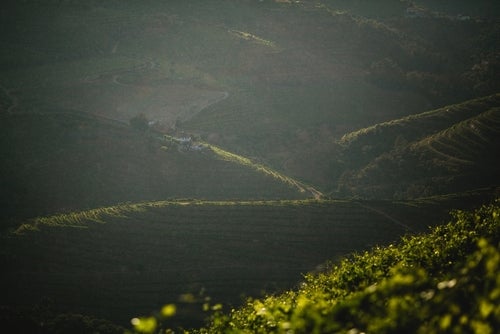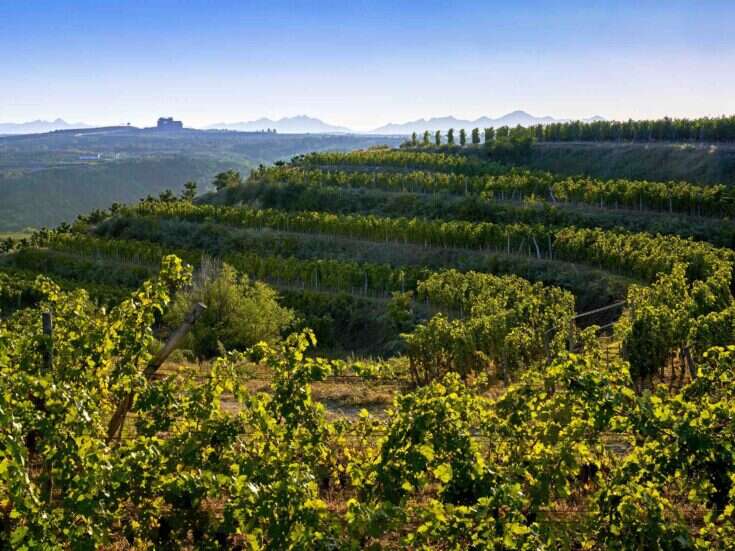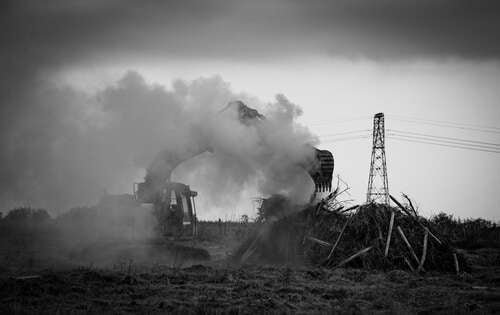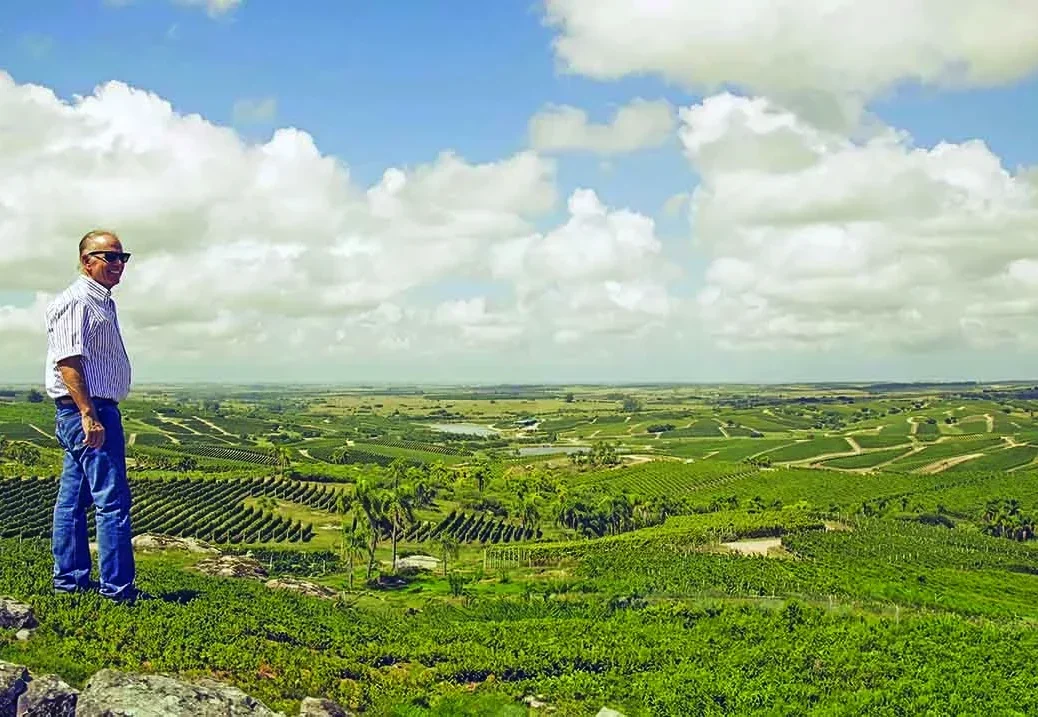
Alejandro Bulgheroni was late to wine but now has one of the world’s biggest collections of wineries.
Until the age of 64, Alejandro Bulgheroni had been more or less oblivious to the potential of the land for producing wine. In fact, his relationship to the land had been on the one hand to explore it below ground for the extraction of oil and gas, and on the other, to run vast tracts of Argentina’s pampas above ground for ranching. Unlike so many of his contemporaries, he did not start life with wine in his blood. Making up for lost time since his epiphany at an age when most normal people are thinking of settling back into the rocking chair on the retirement patio, he has established, in relatively short order, one of the most extensive groups of wineries around the world.
Drilling for wine
The lightbulb moment when Bulgheroni turned his attention from drilling for oil to drilling for wine was as fortuitous as it was unexpected. It came following the decision in 1997 to look for a beach house at Punta del Este in Uruguay. Bulgheroni had always enjoyed the local Malbec and “Chablis” as a young man, but he wasn’t particularly interested in wine. After the sale of 250,000ha (620,000 acres) of family ranch land in Argentina, his wife Bettina was keen to continue ranching in Uruguay. In Garzón, near Punta del Este, he invested in ranching for forestry and animals and, subsequently, olive trees, inaugurating his first wind farm in 2006, with a view to providing renewable energy for the farm.
The view from the ranch was of a hill that looked ideal for more wind turbines. On closer inspection, it turned out to be a magical environment of creeks, hills, trees, and rocks. Surveying the scene as he stood on that hill, Bulgheroni was intrigued. The high cost of solar and wind power prompted him to consider using the land for vineyards. He brought in a vineyard consultant from Mendoza who was convinced of its potential for grapes. He then contacted international wine consultant Alberto Antonini (see WFW 65, pp.106–09), who visited over Easter in 2007, and together they studied the soils, the rainfall, and all aspects of site suitability.
The land was only 11 miles (18km) from the Atlantic Ocean, with its fresh ocean breezes and weathered rock soils, known as balasto. After a week surveying the property, Antonini became convinced that the land held untapped potential for vines. Bulgheroni, for his part, had been schooled in the importance of terroir for good wine, but it is more than a little ironic that the Argentinian should have left his homeland to find his wine feet in Uruguay.
Antonini suggested that they take things slowly, planting 4 or 5ha (10 or 12 acres) and then waiting four or five years to see how it turned out. Bulgheroni retorted, “Look, do you know how old I am? I’m not getting any younger, and I can’t wait ten years before I see the results.” He suggested planting 40ha (100 acres) a year for the next four years, saying, “I’ll take the risk; you make the wine.” Antonini wanted to plant Tannat, Uruguay’s signature red grape, but Bulgheroni was hesitant. He told Antonini, “No, it’s too rough for my liking. I prefer accessible wines that are enjoyable to drink.” Antonini assured him he’d make the wine accessible.
In 2010, they produced their first Tannat, which fitted the approachability bill. A winery—today a model of water efficiency and design innovation—was built and completed in 2015. There are 240ha (600 acres) at Garzón, with Tannat and Albariño the main grape varieties. Wine tourism is part of the experience at Garzón—from cooking classes by the restaurant staff, through picnics on foot and by bicycle, to tastings. The long-term goal is to position the property as a luxury resort. Bodegas Brisas followed. About 9 miles (15km) away, the vineyards are on different soils, and Atlantic breezes speed the drying of humidity caused by excessive rainfall.
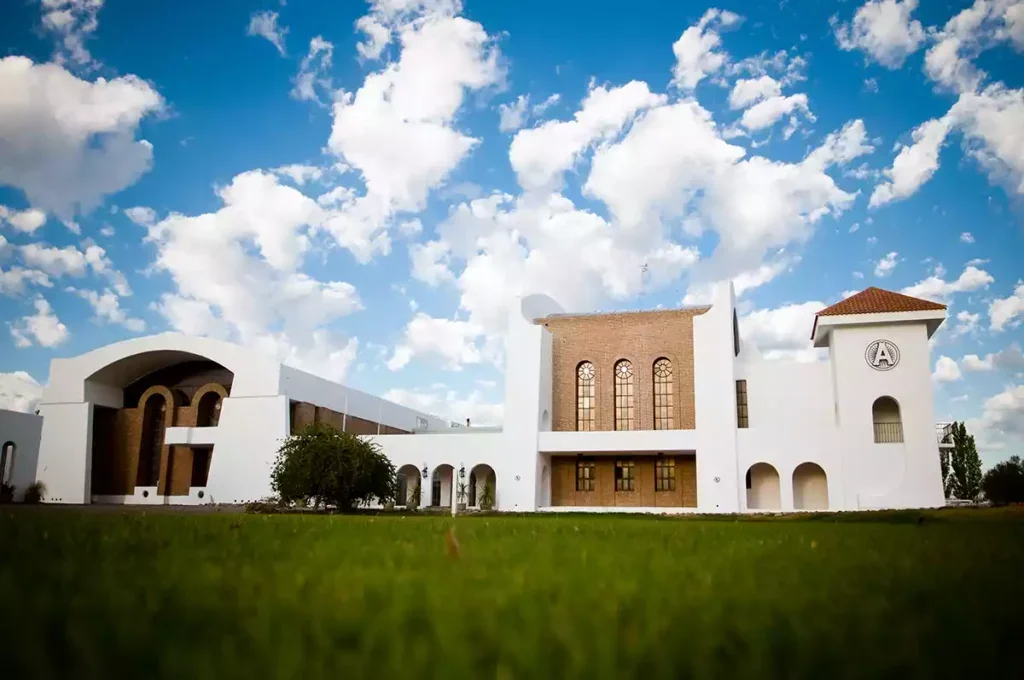
The early years of Alejandro Bulgheroni
Following the Argentinian government’s encouragement of immigration in the second half of the 19th century, many Italian immigrants headed for Mendoza, where they started by working in vineyards, eventually becoming able, through hard work, to plant their own little patches of vines. Some flourished and grew into vast wine businesses in the 20th century, like those of Catena, Pulenta, and Zuccardi. Bulgheroni’s great grandfather, Giovanni Alessandro, came from Lombardy in 1873 and worked as a foreman for the British on the construction of the railroad between Buenos Aires and Mendoza. If he had ever planned to reach Mendoza, his plans were, so to speak, derailed.
He stopped off at Rufino in Santa Fe, nearly 310 miles (500km) to the west of Buenos Aires, liked it, and decided to stay. Bulgheroni’s grandfather, Angel; his father, Alejandro Angel; and he himself, in 1943, were all born there. He enjoyed a happy childhood in Rufino, where the immigrant values of a good education and hard work were drummed into him. The family spent their holidays in Cordoba at Colonia Caroya, where the Piedmontese community produced wine, salami, fruit, olives, and other products of their Italian heritage. With his brother Carlos and sister Mercedes, he would go into the vineyards, and they would pick the juiciest bunches of eating grapes.
The family moved to Buenos Aires when he was ten. In those days, it was, he says, “a big little town,” and they lived in the tranquil suburb of Punta Chica. After his school years at Marin, he was one of 200 students from 5,000 applicants to be chosen for a place at the University of Buenos Aires to study industrial engineering, despite his father’s hope that he would become an economist. In 1964, he spent his first summer on the oil rigs in the coastal city of Comodoro Rivadavia in the Patagonian province of Chubut. In 1965, at the age of 22, he started working part time with service units for oil wells and drilling rigs, before finishing his degree at the University of Buenos Aires in 1967.
At the University of Texas, he studied drilling and oil production. Argentina has big reserves of oil and gas, enough for the country to be self-sufficient and to be able to export gas to its neighbors and oil around the world. He spent the next five years working in Comodoro Rivadavia, returning to Buenos Aires to work with his father until he passed away in 1985. After his father’s death, he and his brother ran the Bridas Corporation, developing it into the largest private energy company in Argentina.
To California and back
When in 2008 Carlos Pulenta, the founder of Bodega Vistalba, told him his partners were pulling out, Bulgheroni agreed to buy them out and take a 50% share in Vistalba, with its vineyards in Luján de Cujo and the Uco Valley. At this point, he decided to target the United States as his main wine market. In search of a suitable property with good soils, he found and acquired Renwood in the Sierra Foothills in Amador County. Just as Malbec was the signature variety in Argentina and Tannat in Uruguay, Bulgheroni liked the idea of producing Zinfandel in the States, a wine very much appreciated and enjoyed by the local California market.
With a toehold in California, he was lured to Napa Valley. Land there was of course considerably more expensive but had obvious potential. He purchased a small winery with 1.4ha (3.5 acres), the former Founders Room of Harlan Estate in 2016, which he named Lithology, renovating it by upgrading the infrastructure with new equipment dedicated to the production of fine wine. Certified organic, the estate vineyard is at the base of Howell Mountain and the Vaca Mountain range and, with its well-drained, mineral-rich soils, is ideal for Cabernet Sauvignon. Lithology also sources fruit from several of Napa’s top vineyards, including the Beckstoffer Dr Crane, To Kalon, and Las Piedras properties.
At around the same time, feeling the need for volume wine production both for Argentina and for export, he acquired the Argento brand and winery. After further additions, Grupo Avinea was formed, its 323ha (798 acres) in Mendoza and Chubut make it the largest organic and sustainable wine producer in Argentina, outputting 800,000 cases of wine. Sustainability is the key here, with organic vineyards, energy-saving machinery, regular care of the soils, and a treatment plant. Although Argento started out as a volume project, he was keen to improve the wine quality, so it now also produces single-vineyard wines from Altamira and Gualtallary in the Uco Valley, and Alto Agrelo in Luján de Cuyo.
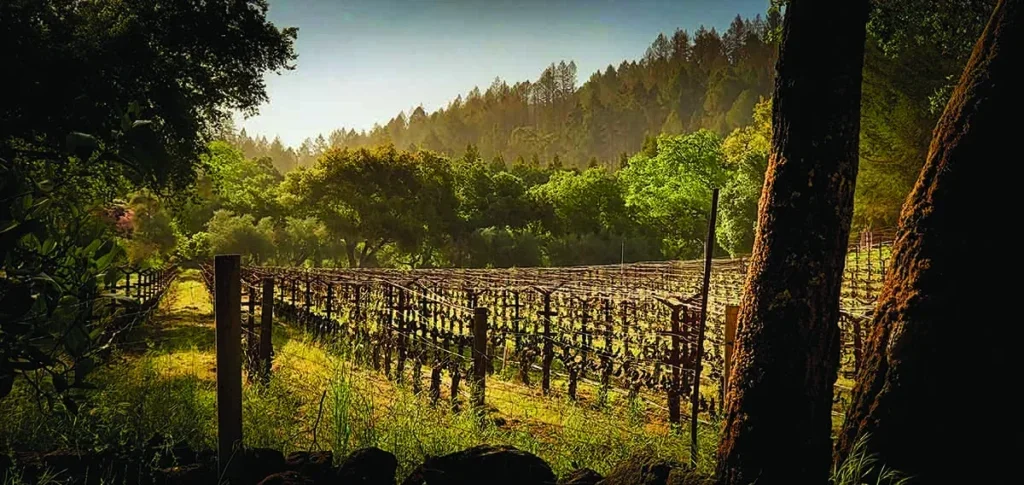
Tuscany: Land of wine and olive oil
Frustrated that his Uruguayan olive oil, as excellent as it was, was not better known or appreciated on overseas markets, it seemed an obvious move to head to Tuscany—not least because he and Bettina adored the region. They were guided by Antonini, who knew Tuscany well and advised them to seek out the best terroirs for Sangiovese. This led to the purchase of the historic 625ha (1,545-acre) Dievole, with 157ha (388 acres) of vineyards planted, in the Castelnuovo Berardenga township of Chianti Classico just north of Siena, which also brought with it 9ha (22 acres) of olive groves. With a panorama overlooking Tuscany’s unique landscape of rolling hills, the Dievole Wine Resort (from the Latin Duo vuole, “God willing”) comprises a hotel, swimming pool, and restaurant complex, incorporating wine tours, beach trips, yoga, walking, and wine and olive-oil tastings.
After adding the bijou 4ha (10-acre) estate of Certosa di Pontignano in Chianti Classico, with a foot in the Tuscan door, he decided to buy two estates in Montalcino. Poggio Landi came first, a 180ha (445-acre) estate, with 62ha (153 acres) of vineyards planted, acquired from Fattoria dei Barbi and Tenuta Vitanza, combining vineyards in the north of Montalcino and in the southern part of the zone around Castelnuovo dell’Abate. It was followed the same year by the purchase of Podere Brizio, near Tavernelle, with 27ha (66 acres) of land, 12ha (30 acres) planted to Sangiovese and 2ha (5 acres) to olives. While the Poggio Landi wines are more approachable, those of Podere Brizio are more complex, with the potential for longer aging.
Still looking for the best appellations in the region, in 2015 he acquired from Lodovico Antinori Tenuta I Pianali in Bolgheri and renamed it Le Colonne. The terroir is excellent, with 61ha (152 acres) of vineyards planted at varying altitudes in the foothills of the Colline Metallifere to international varieties: Cabernet Sauvignon, Cabernet Franc, Merlot, Petit Verdot, and Syrah, as well as Vermentino. His latest venture here, Tenuta Meraviglia (literally, “Marvel”), sitting in the hills with, yes, marvelous views of the Tuscan coastline, is devoted to 95ha (235 acres) of vineyards, including 34ha (84 acres) of Cabernet Franc.
Bordeaux and a look to the Far East
With his first classic European region under his belt, it was time to invest in Bordeaux, bringing Michel Rolland on board to advise there and at Lithology in Napa. His aim here was to tap into the Chinese market, which he felt was the future for Bordeaux on the export market. Taking advice from Rolland, and with the crus classés beyond even his financial reach, he bought the 66ha (164-acre) Château Suau, a medieval hunting lodge located on the highest point of the Cadillac, Côtes de Bordeaux appellation. Converted to organic cultivation, Château Suau is performing well in global markets, thanks to its relatively good-value, sulfur-free organic wines.
By 2015, with nothing in the Far East market, he was keen to establish a foothold there, too. The initial thinking was for a volume project, but he changed his mind and decided to make quality wine by investing in the development of Alkina in Australia’s Barossa Valley. You can read the story of Alkina and Chilean viticulturist Pedro Parra’s contribution to its detailed soil mapping in my article in WFW 75 (pp.74–77). Suffice to say, from a small number of exceptional old-vine plots on prime Barossa dirt, Alkina is producing some of the Barossa’s greatest wines, and Bulgheroni is thrilled with the development of the property, including its wine-tourism side, under the watchful eyes of Amelia Nolan, Dan Coward, and Alberto Antonini.
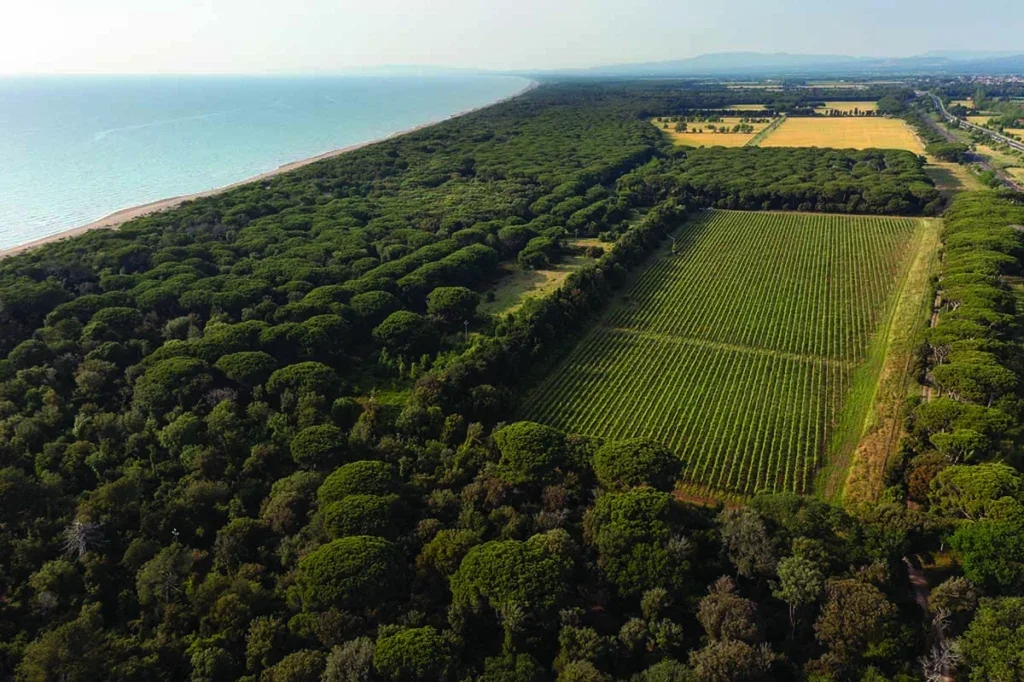
The wheel turns full circle
The wheel finally turned full circle in more ways than one with Bulgheroni’s establishment of Bodega Otronia in southern Argentina’s Patagonia region. It wasn’t just a return to the country of his birth but a homecoming to the place where his company had its first office in Sarmiento, close to the oil fields, in 1959.
The governor of Chubut Province had been asking the oil producers for some time why they didn’t invest in the local community there, in ranching and growing fruit. Nobody listened. But when Bulgheroni started buying land in Uruguay and establishing the olive groves, he decided to go back to the governor and give him an answer. He went and talked to people about buying land with a view to creating jobs for the local women and their families so that they could work during the summer and provide for their families.
The move is an illustration of Bulgheroni’s modus operandi. In creating his projects, he is interested in both the wine and the engineering side, as might be expected given his background. At the same time, he fervently believes in encouraging local communities, in providing opportunities for work and improving their working conditions, and above all to hand them the responsibility for running the projects.
At 45°33′ south, Otronia is in the southern center of Chubut Province on the shores of Lake Musters (once called Otron by the locals). Bulgheroni bought land and talked to an agronomist to whom he suggested growing a variety of different fruit crops, ripening at different times over 120 days to bring work to the local community. He planted 27 different types of fruits and, as they grew, decided that cherries yielded the best crop. Of course, they planted grapes, too, and when in 2010, Antonini discovered what they were doing, he made a study of the area, returning highly enthused about the prospect of making wine there.
This is Patagonia Extrema, where winters are cold, frosts are prominent, and it’s very windy. Cool temperatures, along with a diurnal range in summer, from 41 to 50°F (5–10°C) at night and 95°F (35°C) during the day, contribute to the intensity of aromas and freshness of flavors in the wines. They planted Pinot Noir and Chardonnay on the property’s lacustrine soils (essentially rocks and clay), and keen to make icewine, they added a small amount of Riesling and Gewürztraminer. Today, 50ha (125 acres) are planted. They also make a metodo-tradicional brut nature blanc de blancs that has been acclaimed as Argentina’s top fizz.
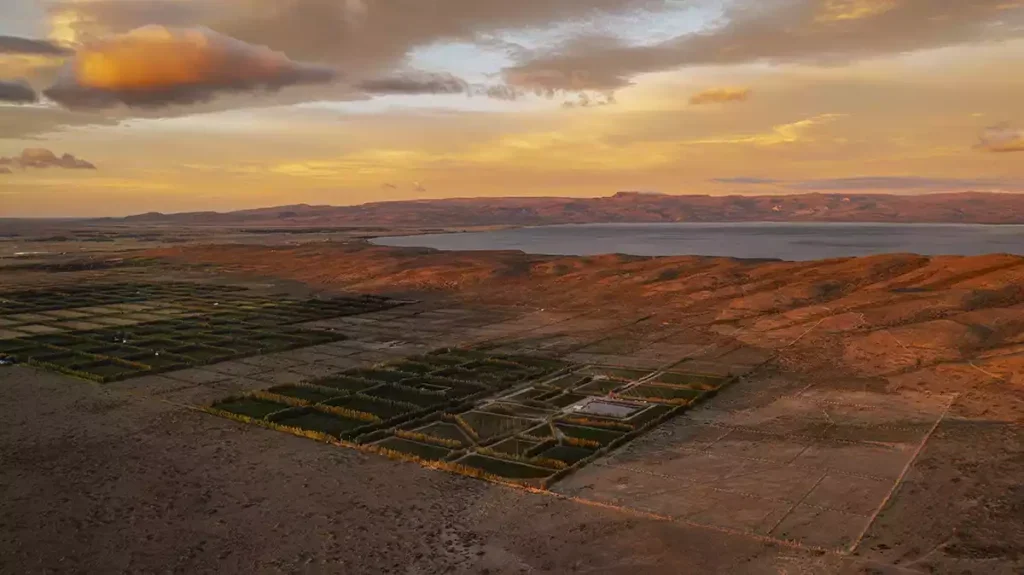
Finale
Bulgheroni’s ideas on sustainability are a direct product of his background as an oil and gas engineer. Each wine estate is unique, with no underlying “criterion” or “model.” Some are focused only on making fine wine, while others have more scope for delivering volume. His approach is to allow each estate to be an authentic and self-sufficient representation of the place: soils, rocks, climate, and culture. At the same time, his estates are largely farmed organically or biodynamically, and all use, or are bringing in, wind and solar power.
It may seem counterintuitive coming from a fossil-fuels billionaire, but his commitment to sustainability is explained by a desire to return to the land what has been extracted from it. He emphasizes that sustainable farming lies at the heart of all his wine projects, believing that significant positive change can only be achieved by caring for the land, restoring soil health, planting trees, and implementing careful water-management practices. He believes irrigation to be one of the essential tools in the arsenal against climate change, acknowledging it as a significant challenge but expressing confidence in his ability to confront it.
Today, Alejandro Bulgheroni Family Vineyards comprises 14 wineries spread across more than 1,115ha (2,755 acres). ABFV represents the family’s global winemaking operations, unified by a shared philosophy. “All my life, I have worked in different businesses, learning how to work with good people who know about the subject, trusting them and delegating responsibility,” says Bulgheroni. “Together, we have crafted a portfolio of premium wines with distinctive personalities and a profound sense of place, each reflecting the unique terroir of its origin. Did I make the right decision to go into wine in 2007 at the age of 64? Absolutely. When I do something, I do it with passion—and I am very passionate about the wine business.”

